Antioxidants and Menopause: Fighting Inflammation Naturally
Introduction
Menopause is a biological milestone — a time of profound transformation where the body transitions into a new hormonal landscape. Yet for many women, this phase brings an invisible challenge: inflammation.
You may not see it or feel it right away, but under the surface, subtle biochemical changes are happening. Estrogen, a natural anti-inflammatory hormone, declines sharply, allowing oxidative stress and chronic inflammation to rise. These shifts can affect energy, mood, skin, metabolism, and even how you age.
But there’s good news: antioxidants — the body’s natural defense system — can help restore equilibrium. They protect your cells, calm inflammation, and support graceful aging from the inside out.
Let’s explore how menopause and oxidative stress are connected, what antioxidants actually do, and how to harness their power through food, lifestyle, and targeted supplements to stay radiant, resilient, and strong. ✨
Looking for supplements for This? Click here.
🔥 The Inflammation Shift During Menopause

Inflammation isn’t always bad. Acute inflammation — like redness after a scrape or swelling after a workout — is part of healing. The problem begins when inflammation becomes chronic and silent, simmering below the surface for years.
Estrogen plays a major role in regulating this balance. It helps control immune activity, protect blood vessels, and neutralize oxidative stress. When estrogen levels drop, inflammatory markers such as C-reactive protein (CRP) and interleukin-6 (IL-6) tend to rise.
This inflammation contributes to many postmenopausal concerns — joint stiffness, fatigue, weight gain, cognitive fog, and even cardiovascular risk. Scientists sometimes call this “inflammaging” — a slow, cellular inflammation that accelerates aging.
Without intervention, oxidative stress (the buildup of free radicals) damages mitochondria, collagen, and DNA. That’s why antioxidant support becomes not just beneficial, but essential.
🌸 Understanding Oxidative Stress
Every cell in your body produces energy through a process called oxidation — where oxygen is used to create ATP (your body’s energy currency). During this process, unstable molecules called free radicals are generated as natural byproducts.
Free radicals aren’t always harmful — your body uses them for immune defense and signaling. The problem arises when they outnumber your antioxidants. This imbalance is known as oxidative stress.
During menopause, oxidative stress increases due to:
Declining estrogen (which naturally scavenges free radicals)
Metabolic changes like insulin resistance
Sleep disruption and higher cortisol
Environmental toxins, processed foods, and stress
Unchecked oxidative stress leads to cell damage, fatigue, skin aging, muscle loss, and inflammation — the very symptoms that many women associate with menopause itself.
Antioxidants are your body’s built-in repair system — the molecules that neutralize these unstable free radicals before they cause harm.
🌞 The Estrogen–Antioxidant Connection
Estrogen does far more than regulate reproduction — it’s also a powerful antioxidant. It enhances the production of glutathione, the body’s “master antioxidant,” and protects mitochondria from oxidative damage.
When estrogen declines, glutathione levels drop, and oxidative stress can rise sharply. This is one reason why menopause is often accompanied by fatigue, poor skin elasticity, or inflammatory conditions like arthritis or metabolic syndrome.
Replacing estrogen through hormone therapy may help some women, but for those who prefer natural or complementary approaches, boosting antioxidant defenses is a safer and highly effective strategy to mimic part of that lost protection.
🍇 The Antioxidant Network
Antioxidants aren’t a single nutrient — they’re a team, each working in harmony with others. Some are produced naturally by your body, while others come from diet and supplements.
Key members of this antioxidant network include:
Glutathione, the body’s master detoxifier and free radical neutralizer.
CoQ10, which fuels mitochondria and protects heart tissue.
Vitamin C, a water-soluble antioxidant that regenerates other antioxidants and supports collagen.
Vitamin E, a fat-soluble antioxidant that protects cell membranes.
Polyphenols from plants like berries, green tea, and turmeric, which reduce inflammation.
Alpha-lipoic acid, a universal antioxidant that works in both water and fat environments, recycling others like vitamin C and glutathione.
Together, they defend your cells like a well-coordinated orchestra — each playing its role in keeping you vibrant and resilient.
💖 Antioxidants and Cardiovascular Health
After menopause, heart health becomes one of the most important areas to protect. Estrogen used to keep arteries flexible and reduce LDL oxidation, but its absence increases oxidative stress on the cardiovascular system.
Oxidized LDL is one of the main drivers of plaque buildup in arteries — the starting point of atherosclerosis. Antioxidants like vitamin E, CoQ10, and polyphenols from olive oil or grapes can counter this by preventing LDL oxidation and improving endothelial function (the health of your blood vessel lining).
Studies show that women with higher antioxidant intake have lower CRP levels, healthier blood pressure, and improved cholesterol ratios.
In practical terms: eating colorful plant-based foods, staying active, and supplementing with CoQ10 can literally keep your arteries “younger” and your circulation more efficient.
💆 Skin, Collagen, and Oxidative Damage
Your skin is one of the first places oxidative stress shows up. UV exposure, pollution, and hormonal decline reduce collagen synthesis and increase free radical damage.
Antioxidants like vitamin C, E, selenium, and astaxanthin can protect skin cells from oxidation and stimulate collagen production. Vitamin C, in particular, is essential for the enzymes that stabilize collagen fibers, making skin more elastic and hydrated.
Polyphenols from green tea, grapes, and cacao have also been shown to reduce wrinkles, improve tone, and increase microcirculation in the skin.
Collagen supplements combined with antioxidants amplify these effects — antioxidants protect the collagen you have, while collagen peptides help your body make more.
🧠 Brain Health and Emotional Resilience
Estrogen has neuroprotective effects — it supports blood flow to the brain and reduces oxidative stress in neurons. Its decline can lead to brain fog, mood swings, or even increased risk of cognitive decline later in life.
Antioxidants like alpha-lipoic acid, vitamin E, and flavonoids from berries and dark chocolate help maintain mitochondrial efficiency in brain cells. They also improve neurotransmitter balance and support memory and mood.
Omega-3 fatty acids, while not technically antioxidants, complement this system by reducing neuroinflammation — another key factor in menopausal brain changes.
A diet rich in antioxidants doesn’t just protect your brain — it can lift your mood, sharpen focus, and restore a sense of clarity that menopause often disrupts. 🌺
Looking for supplements for This? Click here.
💪 Joint Health and Anti-Inflammatory Protection
Joint stiffness or aching after menopause is common — often driven by inflammation in cartilage and connective tissue.
Antioxidants such as curcumin (from turmeric), resveratrol, and green tea catechins inhibit NF-κB, a key inflammatory pathway that triggers pain and tissue breakdown.
Vitamin C and collagen together also support cartilage regeneration, while CoQ10 improves mitochondrial function in joint tissue.
These nutrients don’t just relieve discomfort — they help rebuild resilience at the cellular level, reducing both pain and the inflammatory triggers that cause it.
🌿 Top Food Sources of Antioxidants
A colorful diet is your best defense against oxidative stress. Each hue in fruits and vegetables represents a unique antioxidant compound:
Red foods like tomatoes and pomegranates are rich in lycopene, which supports cardiovascular and skin health.
Orange and yellow foods like carrots and oranges contain beta-carotene and vitamin C, protecting eyes and immune function.
Green vegetables like spinach and broccoli are packed with chlorophyll and sulforaphane, aiding detoxification.
Blue and purple foods like blueberries, blackberries, and grapes provide anthocyanins, which protect the brain and blood vessels.
Adding herbs and spices like turmeric, cinnamon, rosemary, and ginger amplifies antioxidant capacity even more. These are nature’s concentrated anti-inflammatory agents — small additions with big impact.
☕ The Power of Polyphenols
Polyphenols are plant compounds found in tea, coffee, wine, and chocolate that act as antioxidants and signaling molecules.
Green tea’s catechins (EGCG) enhance fat metabolism, protect the brain, and lower inflammation markers.
Resveratrol from red grapes mimics some of estrogen’s protective effects on blood vessels and mitochondria.
Cocoa flavanols improve blood flow to the brain and skin, enhancing both cognition and complexion.
These compounds don’t just scavenge free radicals — they activate your body’s own antioxidant defenses, turning on genes related to cellular longevity and repair.
That’s why polyphenols are considered “nutrigenomic” — they communicate directly with your DNA to support long-term health.
🌸 Supplements That Support Antioxidant Defense
While diet forms the foundation, menopause often increases nutrient needs beyond what food alone provides.
Vitamin C supports collagen, immunity, and detoxification. A dose of 500–1000 mg daily replenishes tissue stores.
Vitamin E (mixed tocopherols) protects fatty tissues like the brain, skin, and arteries.
CoQ10 (ubiquinol) restores mitochondrial energy and protects heart cells.
Alpha-lipoic acid regenerates other antioxidants and stabilizes blood sugar.
Resveratrol and curcumin modulate inflammation pathways and mimic estrogen’s protective roles.
Glutathione or NAC (N-acetylcysteine) rebuilds the body’s master antioxidant system.
The goal isn’t to take everything at once, but to build a supportive stack based on your needs — energy, mood, skin, or joint health — while maintaining dietary diversity.
🧘 Lifestyle Habits That Lower Oxidative Stress

Antioxidants work best when paired with habits that reduce inflammation in the first place. Lifestyle is a potent regulator of oxidative stress.
Sleep is one of the body’s most powerful antioxidants. During deep sleep, cells repair damage and replenish glutathione levels. Skimping on rest increases oxidative burden and cortisol.
Movement stimulates antioxidant enzymes and mitochondrial biogenesis. Strength training, walking, or yoga improve oxygen efficiency and circulation.
Stress reduction through breathwork, meditation, or time in nature lowers free radical production. Chronic emotional stress can triple oxidative stress levels — but even 10 minutes of deep breathing can reset balance.
Finally, minimizing processed foods, alcohol, and exposure to pollutants reduces your “oxidative load,” freeing your body to focus on regeneration.
Want to try Breathwork? Click Here.
💫 Antioxidants and Graceful Aging
Antioxidants don’t stop aging — they change how you age. By protecting cells from oxidative injury, they preserve vitality, cognitive sharpness, and skin elasticity.
Aging with antioxidants is about slowing the rust, not chasing youth. It’s about maintaining the energy to do what you love, the clarity to stay present, and the resilience to handle life’s transitions with grace.
When you nourish your body with colorful foods, rest deeply, and move intentionally, you’re telling your cells to thrive, not merely survive.
Menopause doesn’t have to mark decline — it can mark renewal, powered by the intelligence of your body’s antioxidant systems.
🌷 Putting It All Together
Imagine starting your day with a green smoothie rich in berries, spinach, and flaxseed — your morning antioxidant infusion. Later, sipping green tea between tasks, taking CoQ10 with lunch, and enjoying a colorful dinner of salmon, roasted vegetables, and turmeric-infused rice.
Over weeks and months, these small choices build a biochemical foundation of calm, energy, and longevity. Inflammation lowers, skin glows, focus sharpens, and your body feels more responsive.
This is the quiet magic of antioxidants: not a quick fix, but a steady return to balance.
Every cell, every breath, every heartbeat benefits when you feed your inner fire with nourishment rather than stress.
🌺 Final Thoughts
Menopause is a turning point — not the end of vitality, but a call to deepen it. The body is asking for renewal, protection, and care.
Antioxidants are your allies in this process — invisible protectors that defend, repair, and rejuvenate.
When you combine them with movement, rest, sunlight, and self-compassion, you create a chemistry of resilience.
You’re not fighting aging — you’re collaborating with it, learning to adapt gracefully. Your body is wise, and antioxidants simply help it remember that wisdom. 🌿✨
Looking for online therapy ? Click Here.
📚 References
Vina J. et al. (2006). “Free radicals, oxidative stress and the postmenopausal woman: hormonal regulation and antioxidant therapy.” Gynecological Endocrinology, 22(8): 433–439.
Mendelsohn ME, Karas RH. (2005). “Molecular and cellular basis of cardiovascular gender differences.” Science, 308(5728): 1583–1587.
Dugasani S. et al. (2010). “Comparative antioxidant and anti-inflammatory effects of curcumin and its derivatives.” Food Chemistry, 118(2): 239–247.
Scalbert A. et al. (2005). “Dietary polyphenols and the prevention of diseases.” Critical Reviews in Food Science and Nutrition, 45(4): 287–306.
Valko M. et al. (2007). “Free radicals and antioxidants in normal physiological functions and human disease.” The International Journal of Biochemistry & Cell Biology, 39(1): 44–84.
Nappi RE et al. (2019). “Oxidative stress and menopause: pathophysiology and clinical implications.” Climacteric, 22(6): 554–562.
Xu Y. et al. (2018). “Resveratrol: potential applications in human health and aging.” Aging, 10(5): 1032–1054.
Shaito A. et al. (2020). “Role of polyphenols in the modulation of oxidative stress.” Oxidative Medicine and Cellular Longevity, 2020: 1–18.
Packer L. et al. (2010). “Alpha-lipoic acid as a biological antioxidant.” Free Radical Biology and Medicine, 19(2): 227–250.
Manach C. et al. (2004). “Polyphenols: food sources and bioavailability.” American Journal of Clinical Nutrition, 79(5): 727–747.
Related Posts
-
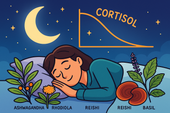
Adaptogen Stacks for Better Sleep and Lower Stress Hormones
Adaptogens can help your body recover from stress and sleep better by regulating key hormones like cortisol and adrenaline. 🌿 Learn how adaptogen stacks work to restore balance, calm the mind, and rebuild resilience — so you can rest deeply and wake renewed. ✨
-
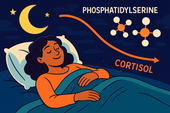
Phosphatidylserine for Nighttime Cortisol Control
When stress hormones stay high at night, deep rest becomes impossible. 🌙 Discover how phosphatidylserine helps calm the brain, reduce nighttime cortisol, and restore healthy sleep rhythms — so you can wake up peaceful, clear, and recharged. ✨
-
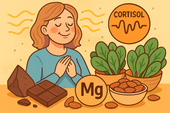
Magnesium for Stress Relief and Cortisol Reduction
Magnesium is one of the most powerful natural tools for stress relief. 🌿 This essential mineral calms your nervous system, lowers cortisol, and helps your body recover from chronic tension. Learn how magnesium replenishes balance, improves sleep, and restores inner peace — naturally. ✨
-
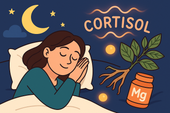
Supplements to Improve Sleep by Balancing Cortisol
When cortisol stays high at night, sleep becomes a struggle. 🌙 Discover natural supplements that calm the nervous system, lower stress hormones, and restore your body’s natural rhythm. From magnesium and ashwagandha to L-theanine and phosphatidylserine, learn how to build deeper, more restorative rest. 🌿
-
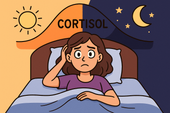
Cortisol and Sleep: Why Stress Keeps You Awake
When stress keeps your body in fight-or-flight mode, cortisol refuses to calm down — and sleep becomes impossible. 🌙 Learn how elevated cortisol disrupts your circadian rhythm, suppresses melatonin, and turns restless nights into exhaustion. Discover how to restore balance and reclaim deep rest. ✨
-
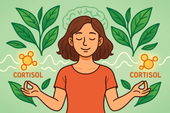
L-Theanine for Cortisol Balance and Anxiety Relief
L-Theanine — the calming amino acid from green tea — helps quiet the mind and balance cortisol, the body’s key stress hormone. 🌿 Learn how it promotes calm focus, eases anxiety, and supports deep rest without sedation, backed by modern research and centuries of tradition. ✨
-
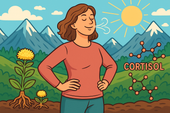
Rhodiola Rosea and Stress Resilience: A Natural Cortisol Regulator
Rhodiola rosea is one of nature’s most powerful tools for resilience. 🌿 This Arctic root helps balance cortisol, fight fatigue, and sharpen focus — keeping you calm yet energized even under stress. Discover the science behind Rhodiola’s adaptogenic power and how it helps your body thrive under pressure. ✨
-
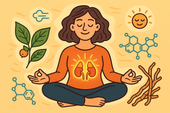
Ashwagandha for Cortisol Balance: What the Science Says
Ashwagandha helps your body recover from chronic stress by calming the adrenal system and balancing cortisol — your key stress hormone. 🌿 Learn what science says about this powerful adaptogen, how it restores energy and focus, and why it’s one of nature’s most effective tools for modern stress relief. ✨
-
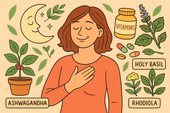
Supplements That Naturally Lower Cortisol Levels
When cortisol levels calm, your energy transforms — no more crashes or jitters, just steady focus and inner peace. 🌿 Learn which natural supplements and habits lower stress hormones, boost calm energy, and help your body thrive with balance instead of burnout. ✨
-
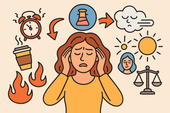
What Is Cortisol Imbalance? Symptoms You Shouldn’t Ignore
Cortisol — your body’s main stress hormone — keeps you alert and energized, but when it’s out of balance, it can drain your health. 🌿 Learn the signs of cortisol imbalance, from fatigue and anxiety to sleep disruption and stubborn weight gain, and discover how to restore calm, energy, and hormonal harmony naturally. ✨
-
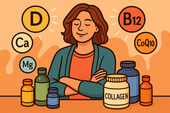
The Best Daily Multivitamins for Menopausal Women
Menopause brings new nutritional needs that your old vitamin routine may no longer meet. 🌿 Discover how the right daily multivitamin can boost energy, balance mood, support bone and heart health, and keep your skin glowing. Learn which nutrients truly matter — from vitamin D to magnesium and B12 — to feel strong and vibrant every day. ✨
-
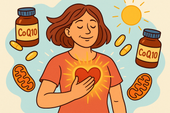
How CoQ10 Supports Heart Health After Menopause
After menopause, heart health becomes more important than ever. ❤️ Discover how CoQ10 — your body’s natural energy molecule — supports cardiovascular strength, restores vitality, and protects against oxidative stress. Learn how this essential nutrient helps keep your heart energized, balanced, and resilient through every stage of life. 🌿
-
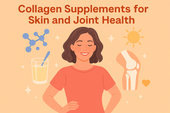
Collagen Supplements for Skin and Joint Health Post-Menopause
After menopause, collagen loss affects both skin elasticity and joint comfort — but supplements can help rebuild from within. 🌸 Learn how collagen peptides, vitamin C, and other nutrients work together to restore firmness, reduce stiffness, and keep you glowing and mobile well into your next chapter. ✨
-
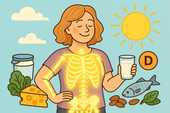
Calcium and Vitamin D: Protecting Bone Health in Menopause
Menopause brings hormonal changes that can weaken bones—but with the right nutrients, strength and stability can be rebuilt. 🦴 Learn how calcium and vitamin D work together to protect bone density, prevent fractures, and keep your body resilient. This guide explores nutrition, sunlight, and lifestyle habits that help your bones stay strong and vibrant for years to come. ☀️💪
-
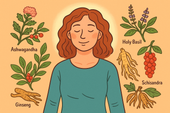
Adaptogens for Energy and Resilience During Menopause
Feeling drained or emotionally scattered during menopause? 🌿 Discover how adaptogenic herbs like Ashwagandha, Rhodiola, and Ginseng can restore energy, balance cortisol, and build emotional resilience. Learn how these natural allies work with your body—not against it—to help you stay strong, focused, and calm through life’s hormonal changes. 🌸
-
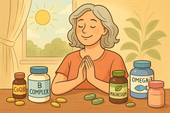
Supplements That Help Beat Menopause Fatigue
Menopause fatigue can feel like more than tiredness—it’s a total energy crash. This guide explores how specific supplements, mindful breathwork, and therapy can help restore balance. Learn how nutrients like B vitamins, magnesium, and adaptogens rebuild your stamina, while breathwork and emotional healing calm your nervous system and bring vitality back to your days. 🌿✨
-

Herbal Blends for Menopausal Restlessness: Finding Calm in Transition
Herbal blends bring the wisdom of nature into moments of rest and renewal. Discover how soothing herbs like chamomile, lemon balm, and ashwagandha work together to calm menopausal restlessness, balance hormones, and invite deep relaxation. 🌿💫
-
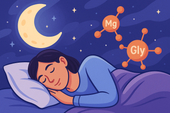
Magnesium + Glycine for Deep Sleep During Menopause
Nutrients like magnesium, glycine, and B vitamins form the foundation for deep, restorative sleep during menopause. Discover how these natural compounds calm your nervous system, balance hormones, and help you wake up refreshed and recharged. 🌿💤
-
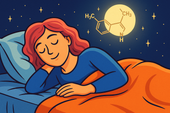
Melatonin and Menopause: Restoring Your Sleep Cycle
Nutrients are the foundation of hormone balance and energy. Learn how vitamins, minerals, and whole foods like greens, salmon, and berries nourish women’s bodies during menopause and beyond — restoring vitality, mood, and strength. 🌿🥗
-
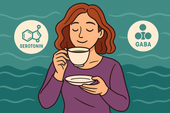
How L-Theanine Helps With Menopausal Anxiety
Science continually deepens our understanding of the human body, from hormones to neurotransmitters. Discover how evidence-based research shapes modern wellness — bridging natural medicine, neuroscience, and hormone balance for healthier living. 🔬🌿
-

Can Ginkgo Biloba Improve Memory in Menopausal Women?
Hormone therapy can be a powerful tool for easing menopause symptoms and restoring balance. Learn how it works, the types available, and how to combine it safely with lifestyle and natural support for optimal well-being. 🌸💊
-

B Vitamins for Mental Clarity During Menopause
Nutrients are the foundation of mental and physical balance during menopause. Discover how vitamins, minerals, and whole foods like leafy greens, fish, nuts, and citrus can fuel energy, clarity, and calm while supporting hormonal health. 🌿✨
-
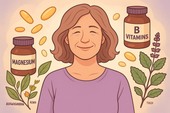
Mood Swings and Menopause: Natural Nutrient Support
Probiotics do more than support digestion — they help balance mood, hormones, and immunity too. Learn how a healthy gut microbiome can ease menopause symptoms, boost energy, and improve emotional resilience naturally. 🌿🦠
-
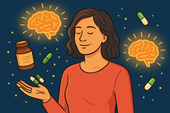
Brain Fog in Menopause: Supplements That May Help
Supplements can be powerful allies in restoring balance, energy, and focus—especially during menopause. Learn how nutrients like omega-3s, vitamin D, magnesium, and herbal adaptogens work together to support brain health, reduce stress, and promote lasting vitality. 🌿💊
-

Adaptogen Stacks for Reducing Night Sweats
Hormone detox isn’t about cleansing your body—it’s about restoring flow. Learn how the liver, gut, and endocrine systems work together to eliminate hormone buildup and how herbs like milk thistle, dandelion, and schisandra support balance, clarity, and natural vitality. 🌿💫
-
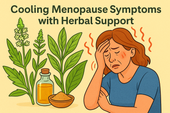
Cooling Menopause Symptoms with Herbal Support
Ashwagandha is one of nature’s most powerful adaptogens, helping women manage stress, sleep better, and balance hormones naturally. Discover how this ancient root supports calm energy, emotional resilience, and relief from menopause-related anxiety and fatigue. 🌿💫
-
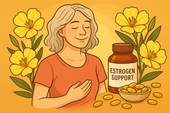
Evening Primrose Oil and Menopause: What the Research Says
Hot flashes are one of the most common—and frustrating—symptoms of menopause. Discover what causes them, why the body’s “internal thermostat” becomes unbalanced, and the natural supplements and lifestyle shifts that can help you cool down, rest better, and feel more in control. 🔥💧
-

How Black Cohosh Helps with Menopausal Symptoms
Sleep disturbances are among the most exhausting symptoms of menopause—but they don’t have to rule your nights. Discover how natural strategies and calming supplements can help you fall asleep faster, stay asleep longer, and wake up feeling truly restored. 🌙💤
-
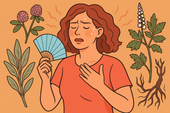
Natural Supplements That May Reduce Hot Flashes
Hot flashes can disrupt sleep, confidence, and daily comfort—but natural relief is possible. Discover the best research-backed supplements like black cohosh, red clover, and licorice root that may reduce hot flashes, balance hormones, and restore inner calm during menopause. 🌿💫
-

Omega-3s and Menopause: Supporting Mood and Inflammation
Omega-3 fatty acids are essential for hormonal harmony, brain function, and emotional balance—especially during menopause. Learn how these healthy fats reduce inflammation, support heart health, and restore calm, vitality, and focus through every stage of midlife. 🌊💫
-
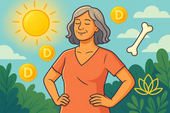
The Role of Vitamin D in Menopausal Health
Vitamin D plays a powerful role in menopausal health—supporting bone strength, hormone balance, and mood stability. Discover how optimizing your vitamin D levels can improve sleep, energy, and emotional well-being while protecting long-term vitality through every stage of menopause. 🌞💪
-
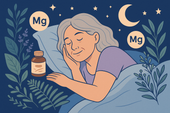
Magnesium for Menopause: Relaxation, Sleep, and Hormonal Support
Self-regulation is the art of staying calm, centered, and in control—no matter what life throws your way. Learn how to strengthen emotional balance, manage stress responses, and cultivate inner peace through mindful techniques that reconnect your heart, body, and brain. 🌿💫
-
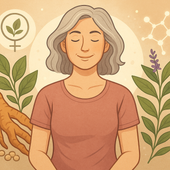
Can Adaptogens Like Ashwagandha Ease Menopausal Symptoms?
Brain fog during menopause can make even simple tasks feel overwhelming—but you’re not losing your sharpness, your hormones are simply shifting. Discover how adaptogens like ashwagandha and key nutrients can restore mental clarity, balance cortisol, and bring calm focus back to your day. 🌿🧠
-
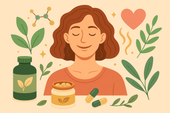
Supplements That Support Hormonal Balance During Menopause
Herbal supplements have supported women’s health for centuries—and modern science is finally catching up. From ashwagandha and maca to red clover and rhodiola, discover how nature’s most trusted herbs can calm stress, balance hormones, and enhance energy through every life stage. 🌿✨
-
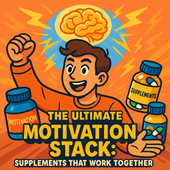
The Ultimate Motivation Stack: Supplements That Work Together
Discover how therapy helps restore motivation, focus, and emotional balance alongside supplement and mindset strategies. This empowering article explores how addressing thought patterns and emotional blocks through therapy can complement biochemical tools for long-term drive and well-being. 🧠💬
-

Entrepreneurial Drive: Can Supplements Help You Avoid Burnout?
Entrepreneurship demands energy, creativity, and mental resilience—but without balance, it leads to burnout. This in-depth article explores how nootropic supplements, adaptogens, and mindset tools can help entrepreneurs sustain motivation, manage stress, and keep their drive sharp for the long haul. 🚀💼
-

Supplements for Students: Staying Motivated Through Exams
Feeling burned out before finals? Discover how the right supplements can help students stay focused, calm, and motivated through exam season. This guide explores science-backed nutrients, brain-boosting herbs, and mindset tools that fuel clarity, memory, and stress resilience when it matters most. 🎓⚡
-
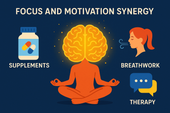
How Nootropic Stacks Can Enhance Drive and Focus Together
Discover how nootropic stacks can reignite both your drive and focus by balancing key neurotransmitters like dopamine and acetylcholine. This in-depth guide explores the science behind motivation, how supplements enhance cognitive performance, and how breathwork and therapy complete the picture for lasting mental clarity. 🧠✨
-
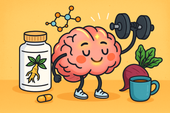
Natural Pre-Workout Supplements for Motivation and Mental Sharpness
Adaptogens are nature’s stress balancers 🌿 — powerful herbs like Ashwagandha, Rhodiola, and Holy Basil that help your body stay calm, focused, and resilient. By regulating cortisol and supporting energy balance, they boost motivation, endurance, and emotional stability — naturally. 🌞🧠
-
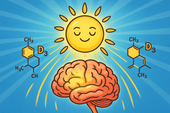
The Role of Vitamin D in Mental Drive and Ambition
Motivation is more than mindset — it’s energy in motion ⚡🧠. It comes from a balance of biology, emotion, and purpose. When your brain, body, and habits align, drive becomes effortless. Learn how to spark consistency, overcome dips, and build unstoppable momentum naturally. 🌿✨
-
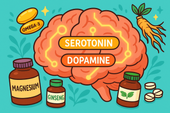
Serotonin, Dopamine, and Motivation: Can Supplements Really Help?
Ginseng is the ultimate vitality root 🌿⚡ — long praised for enhancing focus, energy, and motivation without the crash. By balancing stress hormones, boosting dopamine, and improving brain oxygenation, this adaptogenic powerhouse helps you feel clear, strong, and ready to take action. 🧠✨
-

How Ginseng Helps Support Drive, Motivation, and Energy
Ginseng is nature’s endurance root 🌿⚡ — a timeless adaptogen that fuels focus, drive, and resilience from the inside out. By balancing cortisol, boosting dopamine, and supporting mitochondrial energy, ginseng helps you feel clear, strong, and steady — no crash, just sustainable vitality. 🧠✨
-
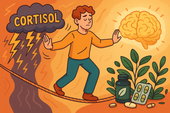
The Stress–Motivation Connection: Supplements That Balance Cortisol
Vitamin D — the “sunshine nutrient” ☀️ — plays a crucial role in mental health, motivation, and energy regulation. Low levels can lead to fatigue, low mood, and sluggish focus. Learn how sunlight, nutrition, and supplementation can restore your inner light and boost emotional balance naturally. 🌿🧠
-
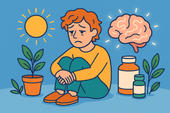
When Low Mood Drains Your Drive: Natural Support Options
Vitamin D is more than the “sunshine vitamin” ☀️ — it’s a key player in mood, motivation, and overall brain health. Low levels can lead to fatigue, low drive, and seasonal sadness. Learn how sunlight, supplements, and nutrition can help restore balance and lift your emotional energy naturally. 🌿🧠
-

How Adaptogenic Herbs Help You Stay Consistent
Adaptogens are nature’s resilience enhancers 🌿. From Ashwagandha to Rhodiola and Holy Basil, these herbs help your body adapt to stress, balance cortisol, and maintain steady energy. Learn how they build inner stability — keeping your focus, mood, and motivation consistent through life’s ups and downs. ⚡🧘
-
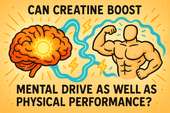
Can Creatine Boost Mental Drive as Well as Physical Performance?
IQ, or intelligence quotient, measures more than problem-solving — it reflects how efficiently your brain processes, adapts, and connects ideas 🧠⚡. While genetics play a role, lifestyle, nutrition, and brain health all influence cognitive performance. Learn how to support mental sharpness and cognitive growth naturally. 🌿✨
-
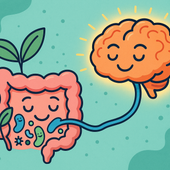
The Link Between Gut Health and Motivation: Probiotics Explained
Serotonin — the “feel-good” neurotransmitter 🌞 — plays a powerful role in mood, motivation, and overall emotional balance. Produced mostly in the gut, it connects digestion, happiness, and focus through the gut-brain axis. Learn how to naturally support serotonin for calmer energy and lasting motivation. 🌿✨
-
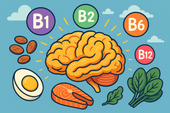
How B Vitamins Fuel Motivation and Energy at the Cellular Level
B vitamins are the body’s natural energy engines ⚡. They convert food into fuel, support dopamine for motivation, and power brain cells at the mitochondrial level. From B1 to B12, these nutrients help you stay focused, resilient, and full of drive — every single day. 🌿🧠
-
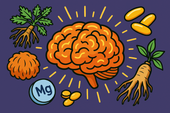
Supplements That Support Mental Endurance for Long Projects
Mindset is more than motivation — it’s the mental framework that shapes how you respond to challenges and pursue goals 🌿🧠. A growth mindset turns obstacles into opportunities, while a fixed mindset fuels self-doubt. Learn the science behind mental resilience and how to cultivate a mindset that sustains focus, creativity, and long-term success. ✨

















































